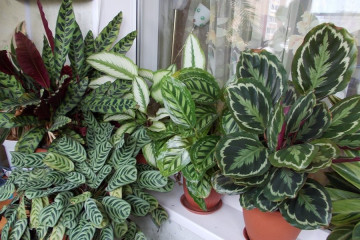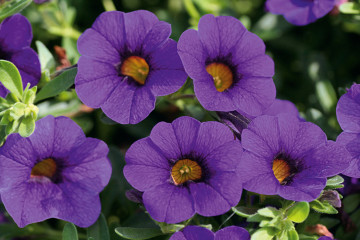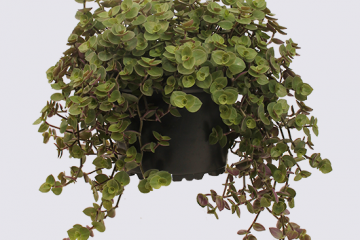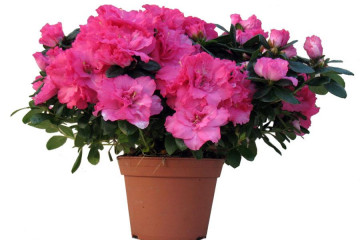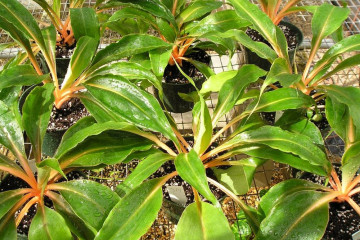Scylla flower, she is a scrub, description
Content:
Scylla is a flower, which is also popularly known as a scrub. It is often confused with a snowdrop, and indeed these flowers have many similarities. The Scylla plant is undemanding to care and can withstand very low temperatures.
Scylla flower, she is a scrub
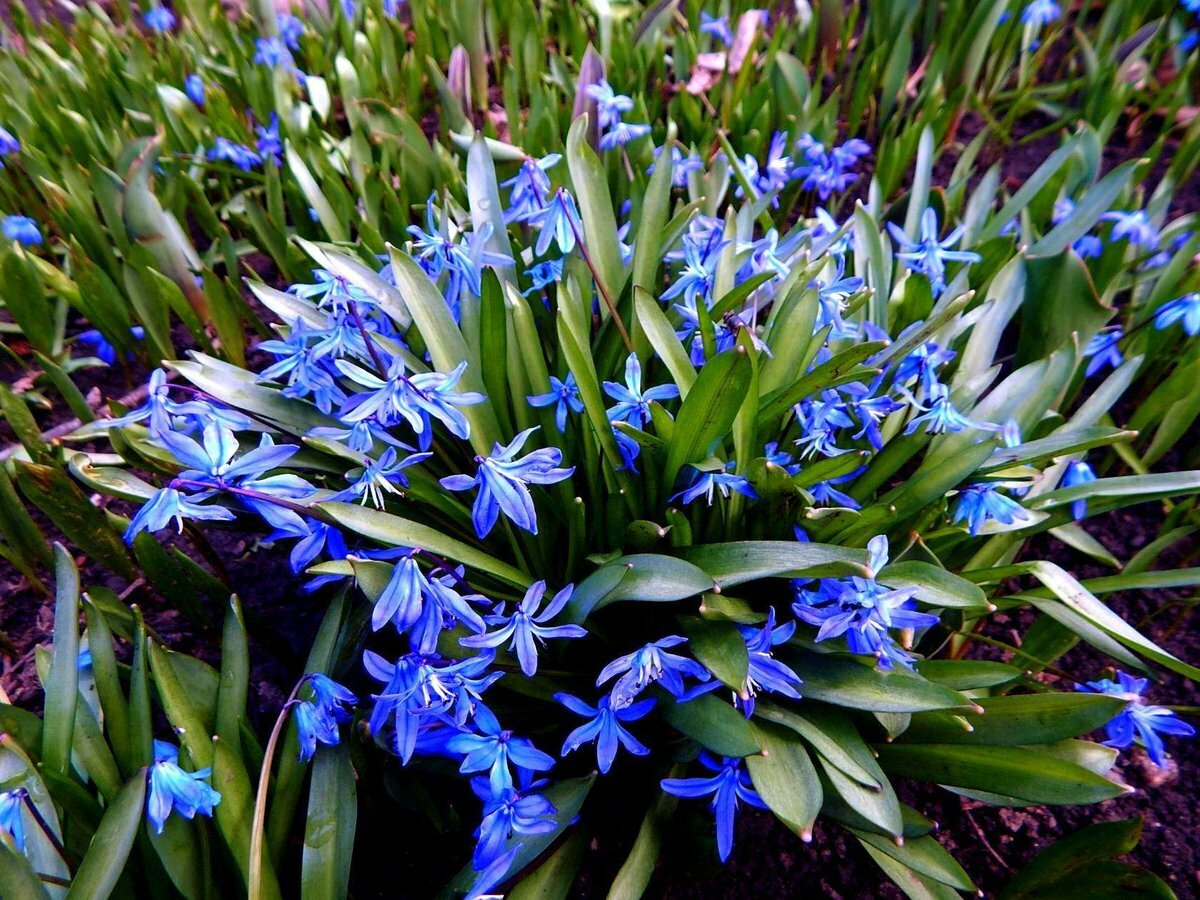
A stunted spit is also called an ornamental onion.
Scylla is a perennial plant of the Asparagus family. The name of the flower of botany was given in honor of the Greek name of the sea onion - "skilla". One of the most famous species of this culture is the Siberian scilla (Scilla siberica)
A short description of what it looks like
Scylla flower description:
- low shrub with a height of 30 to 50 cm;
- lanceolate dense leaf plates of a deep green hue, have parallel venation;
- lilac erect peduncles;
- the bulb is about 5 cm long;
- large bell-shaped flowers are located at the top of the peduncles;
- has 6 petals, perianth and stamen with pistil.
The color of the redwood flowers is presented in a varied palette.
Types and varieties of scilla
Science knows more than 90 varieties of decorative woodland, all of which are in high demand in landscape design. Among these subspecies there is Scylla Mishchenko, which was discovered in 1927 in the Soviet Union.

Small flowers of siberica open in the morning and close in the evening
Siberian Scylla (Scilla sibirica)
Despite its name, Scylla siberica cannot be found in Siberia. One of the popular varieties of this subspecies is Scylla (Siberica alba) of Siberica Alba. It has lilac-blue flowers that open at 9-10 am and close closer to 6 pm.
Scylla bell-shaped (Scilla hispanica)
Has other names: Campanulata or Litardiera. A small shrub 20-30 cm high, with dense foliage at the root rosette. Tall single peduncles of Scylla campanulate hold racemose inflorescences. They have a conical shape and look spectacular on alpine slides or in flower beds.
The linear lanceolate leaves of the Scylla Litardiera are painted in a beautiful bright green color. Bell-shaped flowers are blue, pink or white. Scylla campanulata blooms later than other subspecies - in late spring.
Scilla bifolia
Under natural conditions, Scylla double-leaved grows in the European part of Russia. A lush blooming dwarf plant has pungent-smelling pink or white flowers. There are only two leaf plates, but they are large, broadly linear in shape. Bloom - from April to May.
This subspecies has a cultivar that blooms the most abundantly of all the varieties, called the Scylla Rosea Bifolia.
Scilla autumnalis
A 20-centimeter plant produces no more than 5 arrows. Each of them has from 10 to 20 small lilac and purple buds. The flowers are not bell-shaped, but a five-pointed star.
Scilla peruviana
Particular attention should be paid to the flower of the Peruvian scilla variety, the shoot of which reaches a height of 40 cm, and has a pyramidal inflorescence at the top. It is formed from many microscopic flowers of a light lilac color.
Conditions for growing a scilla at home
Proleska is a real find for gardeners, as this flower is easy to grow at home due to its unpretentiousness.
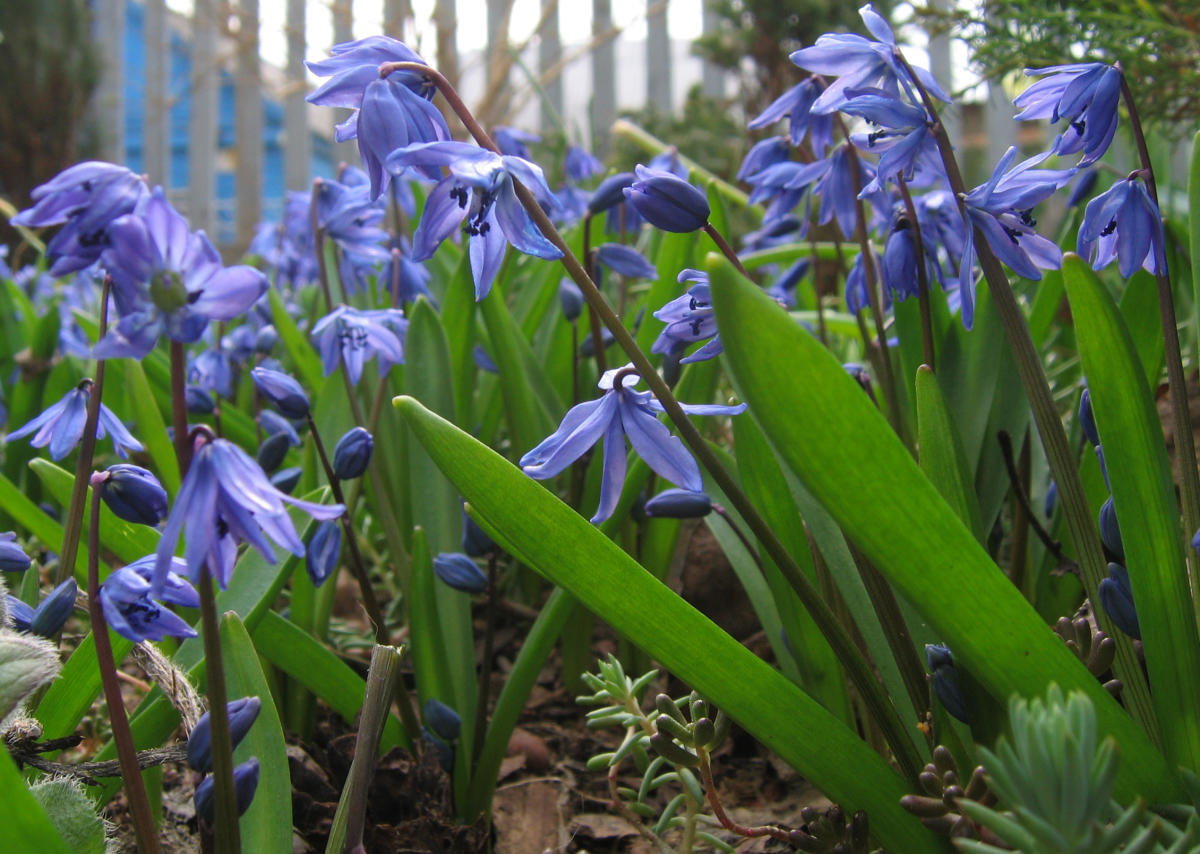
The lighting of the bush depends on the type of scrub
Illumination and temperature conditions
Proleska loves a lot of light, therefore it is recommended to grow it in the garden in areas open to the sun. The bush wakes up long before the snow melts and should be given more sun. However, in this case, the plant variety should also be taken into account. Late-flowering species will still grow more comfortable in slightly shaded areas.
The scrub is not demanding on the temperature regime, however, without proper watering and spraying, it does not feel well during dry hot periods.
Watering rules and humidity
The woodlands love the humidity of both the air and the soil, but in no case should the bushes be poured. They need to be watered with soft, cold water in the morning or evening. In the summer, in the heat, it is also worth taking care of spraying in order to increase the humidity of the air.
Top dressing and soil quality
For healthy growth of the culture, the soil under the Proleskaya must be constantly loose, so this procedure should not be neglected. Every spring and autumn, humus or compost must be added to the soil in order to saturate it with minerals. During the entire growing season, twice a month, it is necessary to feed the bushes with nitrogen and potassium-phosphorus fertilizers.
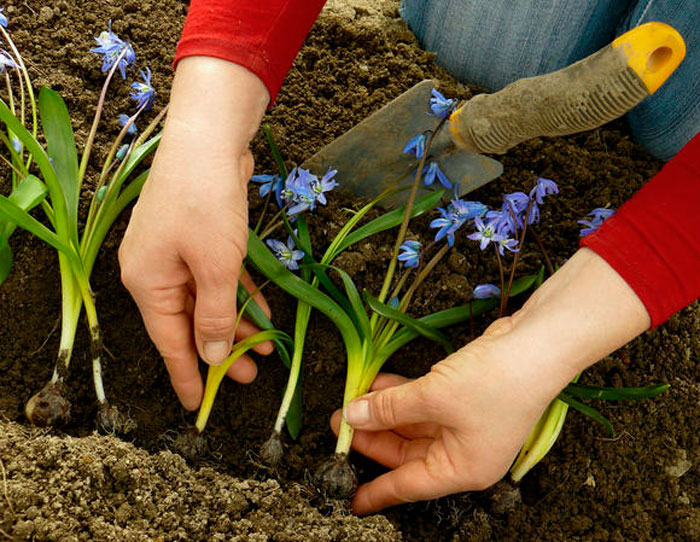
The planting of the scrub is easy
Planting a scilla in open ground
It is not difficult to plant a spit in open ground, moreover, the plant takes root well in new conditions. Before planting, they first dig up the site and add organic matter to it. Then everything is carefully leveled. Each bulb is planted at a distance of 6-8 cm from each other to a depth of 5 cm.At the end, the planting should be abundantly watered.
What time to plant
In general, the blueberry takes root after planting at any time of the year, except of course in winter. Indoor scrub can generally be transplanted and propagated all year round. However, it is worth considering the flowering period, especially if the flower is used to decorate various garden compositions. For example, flower growers recommend planting spring-flowering Scylla on a garden plot 4-5 weeks before the expected flowering period of the variety.
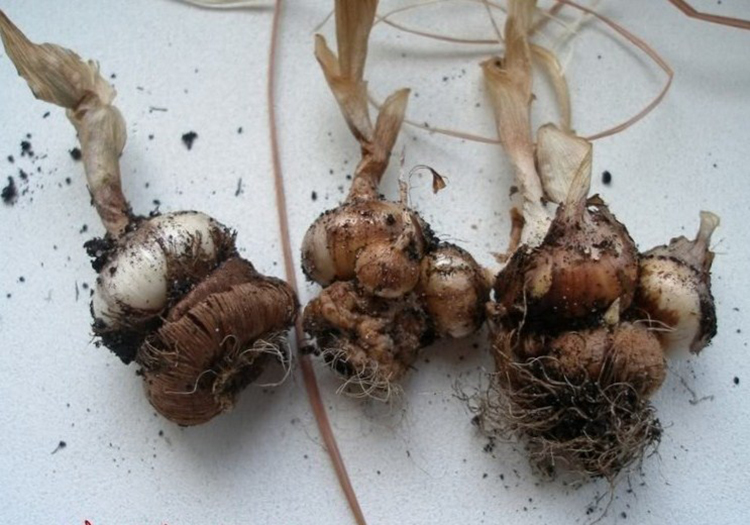
It is most convenient to propagate the plant with daughter bulbs.
Reproduction of scilla
There are several ways to propagate a scrub at home:
- Seeds. In the southern regions, sowing is carried out directly into the open ground. In the northern regions, flower growers are reinsured and grow seedlings. When 2-3 leaves appear on the sprouts, they are seated in separate areas.
- Daughter bulbs. To do this, you should dig up an adult plant and find others in the area of the main bulb, they are small in size. They must be carefully separated and seated in separate places.
Scylla diseases and pests
Despite its high frost resistance, the scrub is susceptible to some diseases:
- Achelenchoides. This is an infectious fungus that infects the entire bush and bulb.
- Gray rot. It infects parts of the bulb, and the stem from it becomes covered with gray mold.
Among pests, rodents and root meadow mites are particularly problematic. Small animals: mice and voles love to feast on Scylla bulbs, sometimes feed on stems. To get rid of them, you need to put bait with poison.Root mites attack the bulb first, then move up to the stem. They get rid of them with the help of insecticides: "Actellika" or "Akarina".
Scylla is not as famous as snowdrops, although it is not inferior to them both in beauty and in winter hardiness. Many of its varieties got their names in honor of famous people, for example, Scylla Rosen or Mishchenko. Beautiful flowering bushes with decorative leaf plates will decorate any garden and do not require troublesome maintenance.
